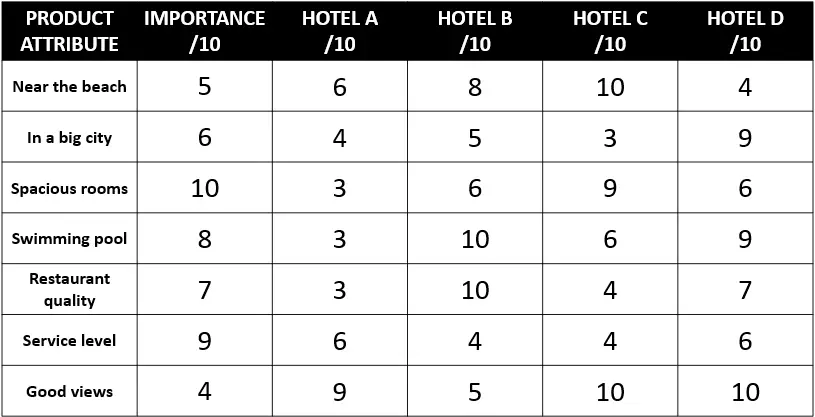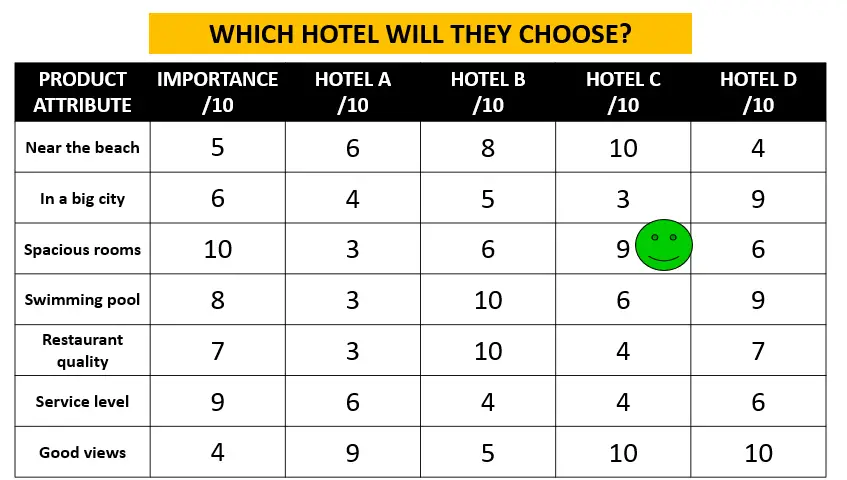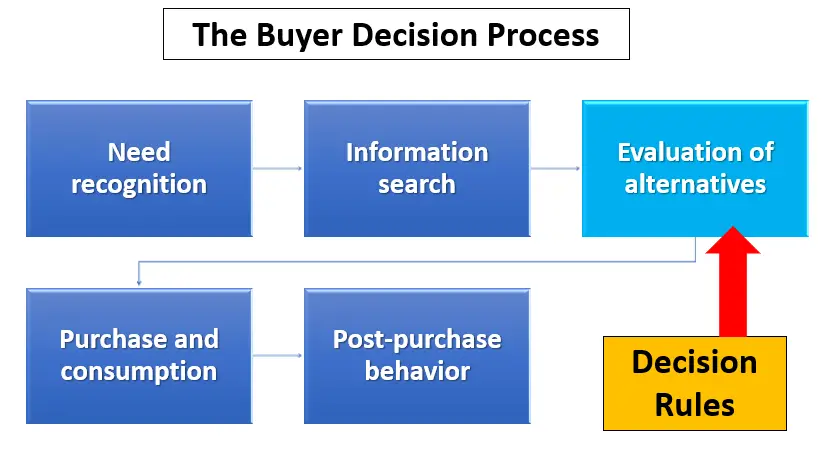Contents
What is the Lexicographic Decision Rule in Consumer Behavior?
Covered in this article:
- Overview of the Lexicographic Decision Rule
- How to Recall the Lexicographic Rule
- A Worked Example of the Lexicographic Decision Rule
- Why Consumers Would Use the Lexicographic Rule
- How Lexicographic Rule differs from other Decision Rules
- A Video Summary of the Lexicographic Rule
- The Main Types of Decision Rules Used by Consumers
- Where Decision Rules Fit into Consumer Behavior
Overview of the Lexicographic Decision Rule
The lexicographic decision rule is a non-compensatory approach to decision-making for consumers.
It is probably the simplest decision rule approach, as consumers are focused upon the most important individual product attribute to them and choose the product offering that best meets that one single attribute.
This is quite different to other decision approaches where usually multiple product attributes are considered in the purchase decision.
For example, for a consumer looking to buy a new smart TV their most important attribute might be the size of the screen. Therefore, they will simply choose the product offering that has the largest screen size.
If, however, there are two or more competing alternatives that have an equal screen size, then the consumer will repeat the process – for these remaining products only – and now looking at their second most important product attribute. Again, they will look for the best offering.
Usually, the lexicographic graphic rule will result in a clear product choice, which is an advantage over other decision rules which may result in multiple products being suitable.
How to Recall the Lexicographic Rule
The term lexicographic, or lexicon, is typically related to structure and sequence and the compiling of dictionaries in particular.
As we know, dictionaries are structured in strict alphabetical order. Therefore, when using the lexicographic decision rule consumers are assessing the potential competing products in a very strict sequence/order from most to least importance.
A Worked Example of the Lexicographic Rule
Let’s work through this decision-making approach using an example. For this example, we are going to select between four competing hotels for a holiday.
The following table summarizes the consumer’s assessment of these hotels. As you can see, in the left-hand column is a list of product attributes.
And in the second column there is an importance rating for each attribute, with the higher score indicating that the attribute is more important.
And as we move across the table, we can see that each attribute for each hotel has been scored out of 10 – with higher scores representing greater quality or performance as perceived by the consumer.
Let’s now see how a consumer would implement the lexicographic rule and what hotel they would select as a result.
As outlined, the consumer will work through the attributes in importance looking for the best performing product. As we can see in the table, the most important attribute to them is “spacious rooms”, and the best performing hotel on that particular attribute is Hotel C.
Therefore, Hotel C will be the final choice – and no other attributes will be considered. This is regardless of the strength/weakness of any other attribute.
Why Consumers Would Use the Lexicographic Rule
The main advantages of using this decision rule to a consumer are:
- It is a very simplistic approach to decision-making
- It is a very time-efficient approach, which probably requires minimal mental effort
- It ensures that the product meets their core/prime need
- it is a helpful approach for low-involvement purchase decisions
- It is also a good approach for when the consumer sees little differences between the brands
- And it may be utilized when the consumer is quite inexperienced in the product category and may be overwhelmed by the extent of information available to compare products
How does the Lexicographic Rule differ from other Decision Rules
The lexicographic rule is somewhat similar to the elimination-by-aspects decision rule.
As a reminder, the elimination-by-aspects rule will also start with the most important product attribute and will eliminate/rule out weaker product offerings.
The main difference between these rules is that the lexicographic approach sets a fairly high standard for attribute – as it is seeking the best. Whereas the elimination by aspects rule is generally seeking the product attribute to be of reasonable/suitable quality, not necessarily the best.
It is also very different to the conjunctive decision rule, where the consumer is seeking a set of selected attributes to meet their expectations and is not relied upon any single attribute alone.
There is some overlap with this rule and the disjunctive rule, as with the disjunctive rule the consumer is seeking a product that performs very well on two or more product attributes that are considered individually. Therefore, the disjunctive rule and the lexicographic rule may produce similar purchase results.
And finally, the lexicographic rule is substantially different from a compensatory decision-making approach, which will consider the totality of the product offering using some form of scoring model.
A Video Summary of the Lexicographic Rule
The following video provides a summary of this decision rule.
The Main Types of Decision Rules Used by Consumers
The main decision rules that are covered in most consumer behavior textbooks are listed as:
- Compensatory decision-making and
- Non-compensatory decision rules, which include:
- conjunctive,
- disjunctive,
- elimination-by-aspects,
- lexicographic, and
- affect referral
The following video provides a brief overview of each of these decision rules.
Where Decision Rules Fit into Consumer Behavior
Decision rules are used by consumers in the evaluation of alternatives stage of the buyer decision process – as shown in the following diagram. At this point in the process, they have gathered information and now must make a selection from competing alternatives.
Related Articles



